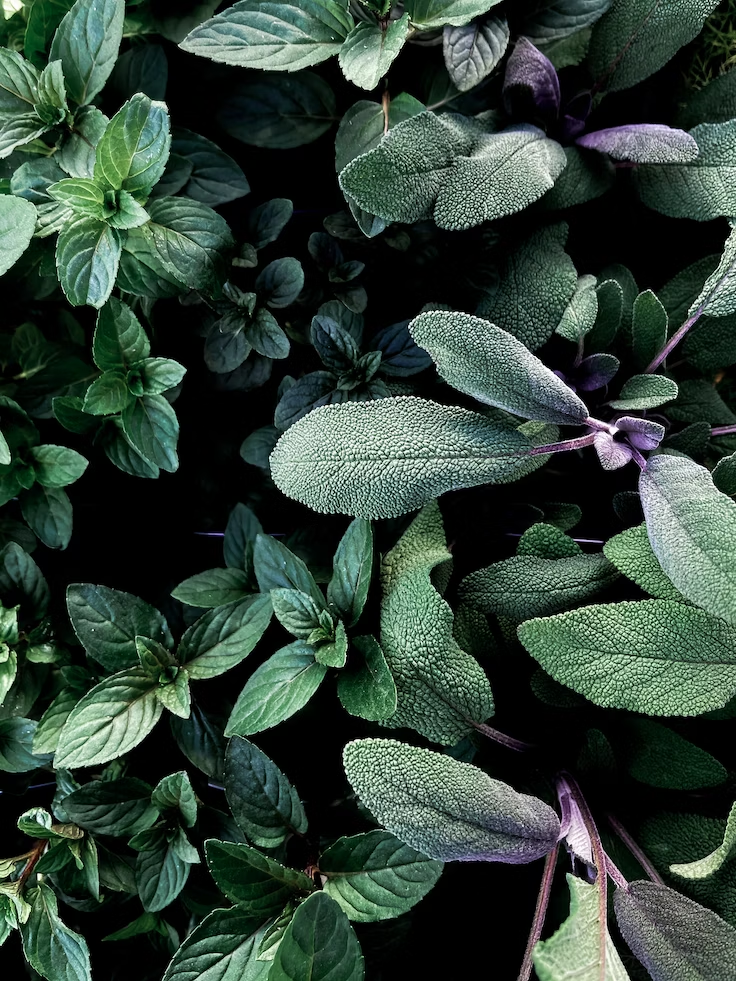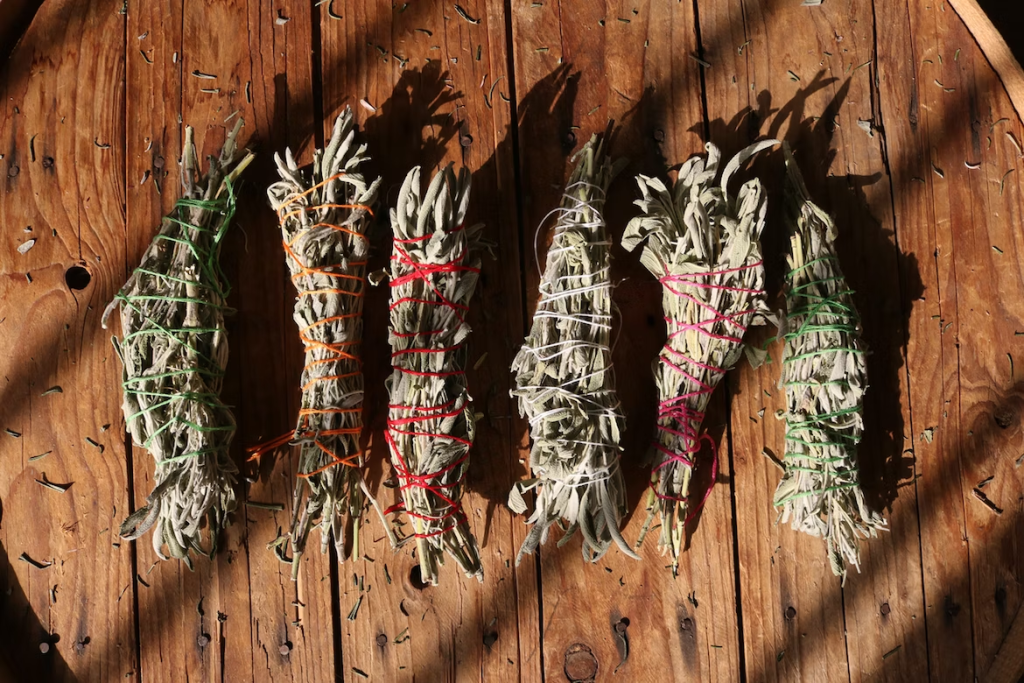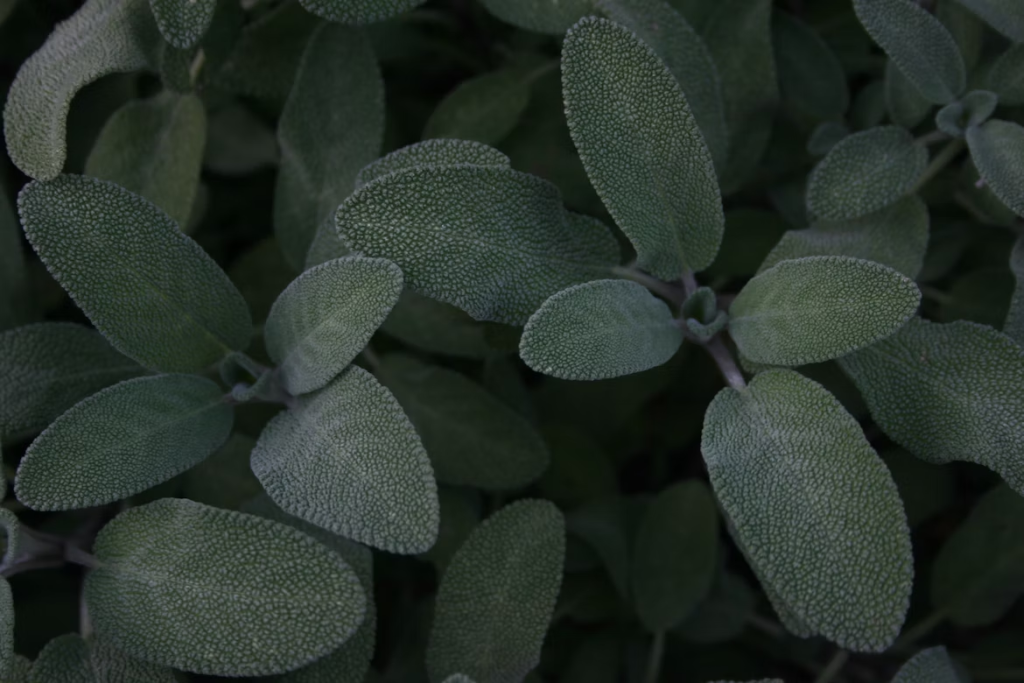If you’re on the hunt for a versatile herb to add to your garden, sage is the perfect option. This plant is not only easy to grow, but it also demands minimal attention, making it an ideal choice for both beginners and experienced gardeners alike.
Sage plants are strong, lasting herbs with woody stems and fragrant leaves. You can use these leaves in different dishes, like bread, soups, and stuffings.
They also produce beautiful flowers, which adds to their charm.
With the right planting location, proper watering practices, and regular pruning, you can enjoy a continuous supply of these aromatic herbs for years to come.
This article will provide you with tips and advice for successfully growing and caring for your own sage plants. Let’s get started.
Key Takeaways
- Sage plants are easy to grow and require minimal maintenance, but they should be planted in well-draining soil with a pH of 6.5 to 7.0 and in an area that receives full sunlight.
- Sage plants can be directly sown from seed, propagated from cuttings, or transplanted into the garden bed or container.
- Pineapple Sage, Golden Variegated Sage, and White Sage are popular varieties to choose from.
- Sage plants should be watered frequently until they get established, then thoroughly but on a less frequent basis.
- Mulching can help with moisture regulation and prevent pesky weeds from propagating in your garden.
- Sage leaves can be harvested by pinching or snipping a branch just above a leaf node.
- Sage stems can get woody over time and should be trimmed back when plants make their return in spring.
Choosing Sage
First things first: choosing the right variety of sage.
While there are over 900 species of sage, the most commonly grown varieties are Common Sage (Salvia officinalis) and Pineapple Sage (Salvia elegans).
- Common Sage has gray-green leaves with a strong flavor that pairs well with poultry, pork, and vegetables.
- Pineapple Sage has bright green leaves with a fruity aroma that complements fruit salads, teas, and desserts.
When selecting a sage plant, consider its mature size and growing conditions. Some varieties can reach up to three feet tall, while others stay small enough for container gardening.
It’s also important to choose healthy plants with no signs of disease or pests. Look for green leaves without any spots or discoloration and sturdy stems that stand upright.
If buying plants online, make sure they’ll be shipped at the right time for planting in your area.

Planting Sage
Once you’ve chosen your desired variety, it’s time to start planting! Either start with seeds or opt for young plants from a local nursery.
If you’re starting from seed, sow them ⅛ inch deep, about eight weeks before your area’s last frost date.
On the other hand, if you’re transplanting young plants or cuttings, wait until after the danger of frost has passed.
Here are some tips for planting this herb:
- Choose a sunny spot: Sage loves sunbathing and needs it to thrive. Make sure to select an area of the garden that receives full sunlight or partial shade in hotter climates.
- Prepare the soil: Wet soil is a big no-no for sage because it could cause your plants to rot. Sage requires well-draining soil that’s sandy or loamy with a pH level between 6.5 and 7.0 for optimal growth. Amend the soil with compost or quality potting mix if needed before planting. The ideal soil temperature should be between 60º and 70ºF.
- Select the suitable planting method: Sage can be directly sown from seed, propagated from cuttings, or transplanted into the garden bed or container after all danger of frost has passed.
- Space the plants: The recommended way is to start with a few small plants. Space these plants about 24 inches apart to allow sufficient room for growth.
Once planted, your sage plants should grow up nicely. Expect them to reach heights between 12 and 30 inches.
And here’s a hack for you: in your garden, place sage near rosemary, cabbage, and carrots. These plants are good neighbors for sage.
But remember to keep your cucumbers away from sage, as they are not the best companions.
The table below shows when you should sow and plant your sage plants. It also lists the best months to harvest them.
| Month / Jobs to do | Sow | Plant | Harvest | |
| January | ||||
| February | ||||
| March | ✓ | ✓ | ||
| April | ✓ | ✓ | ||
| May | ✓ | ✓ | ✓ | |
| June | ✓ | |||
| July | ✓ | |||
| August | ✓ | |||
| September | ✓ | |||
| October | ✓ | |||
| November | ✓ | |||
| December | ||||
Sage Care Tips
To keep your sage plants healthy and thriving, you’ll want to make sure you’re giving them the right attention.
Watering is key when it comes to sage plant care. Young transplants will need more frequent watering until they’re established, but once settled in, sage plants generally prefer dry soil conditions.
You’ll want to water them deeply but infrequently, allowing the top inch of soil to dry out before watering again.
Mulching can also be beneficial for sage plants as it helps regulate soil moisture levels and suppress weed growth.
To ensure a bountiful harvest year after year, regularly prune your sage plants to promote new growth and prevent them from becoming woody.
Trim back thick woody stems when spring returns. Leave stems intact in Autumn so that the plant can prepare for winter.
Harvesting Sage

You can start harvesting leaves once the plants are well-established and have multiple branches.
To harvest sage, simply pinch or snip off sprigs of young leaves regularly. It’s crucial not to cut back more than one-third of the offshoot at a time to keep the plant healthy and producing new growth.
For best flavor, harvest sage in the morning when the essential oil content is highest. The more intense the smell of the leaves, the more flavor they will have.
Once you’ve harvested your sage, it can be used fresh or dried for later use in recipes. Hang up some sprigs in a warm, dark, well-ventilated place to dry them out fully before storing them in an air-tight jar.
Pests and Diseases
Pests and diseases can quickly take hold in your sage garden, causing damage to your plants and reducing their productivity.
Some of the most common pests that may affect sage include:
- aphids,
- spider mites,
- whiteflies,
- and capsid bugs.
These insects can cause significant damage to your sage plants by feeding on the leaves, sucking out sap from stems, or spreading diseases.
To prevent these pests from taking over your garden, you should regularly inspect your plants for signs of infestation and remove any affected leaves or branches as soon as possible.

In addition to pests, sage plants are also susceptible to several fungal diseases, such as powdery mildew, rust, stem rot, and downy mildew.
These diseases can cause yellowing of leaves, wilting of stems and leaves or even death of the plant if left untreated.
To prevent these fungal infections from affecting your sage garden’s health negatively, it’s essential to maintain good plant hygiene practices.
It includes:
- avoiding overhead watering that can lead to waterlogged soil conditions;
- using well-draining soil mixes with adequate drainage holes in containers;
- removing infected plant material promptly;
- keeping foliage dry by spacing plants apart properly;
- providing sufficient air circulation around them by pruning away overcrowded growths;
- and practicing crop rotation where possible.
Final Thoughts
Incorporating sage into your garden is a fantastic way to add an easy-to-grow, low-maintenance herb that offers both aesthetic appeal and delightful aroma.
With the tips and advice provided in this article, you should have a bountiful harvest of aromatic and flavorful sage leaves to use in your favorite dishes.
Remember to choose a variety that’s well-suited for your climate and soil type, and to provide regular watering and fertilization. When planting your sage, make sure to give it enough space to grow and prune it regularly to prevent overcrowding.
Additionally, be on the lookout for common pests such as spider mites or aphids, which can damage your plants if left unchecked.
By following these guidelines, you can enjoy the benefits of fresh sage in your cooking all season long.
Happy gardening!
Frequently Asked Questions
Can sage be grown indoors?
Yes, sage can be grown indoors as long as it receives adequate sunlight and is planted in well-draining soil. It’s best to use a container with drainage holes and water the plant when the top inch of soil feels dry.
How often should sage be fertilized?
Sage should be fertilized once a year, in early spring, using a balanced fertilizer with equal parts nitrogen, phosphorus, and potassium. Avoid over-fertilizing as it can lead to excessive growth and reduced flavor.
Can sage be propagated from root cuttings?
Yes, sage can be propagated from root cuttings. Take a 2-3 inch cutting from the plant’s roots and plant it in well-draining soil. Keep the soil moist until new growth appears.
Is it necessary to prune sage plants?
Yes, it’s necessary to prune sage plants to encourage new growth and prevent woody stems. Pinch back sprigs regularly, trimming thick woody stems in spring. Harvest leaves in the morning for the best flavor.
Can sage be used for medicinal purposes?
Yes, sage can be used for medicinal purposes. It contains antioxidants and vitamin K which help reduce the risk of serious health conditions and clotting blood. Sage butter is also a great way to incorporate its healing benefits.
Was it helpful?

Enamored with the world of golf Jack pursued a degree in Golf Course Management at THE Ohio State University. This career path allowed him to work on some of the highest profile golf courses in the country! Due to the pandemic, Jack began Inside The Yard as a side hustle that quickly became his main hustle. Since starting the company, Jack has relocated to a homestead in Central Arkansas where he and his wife raise cattle and two little girls.




